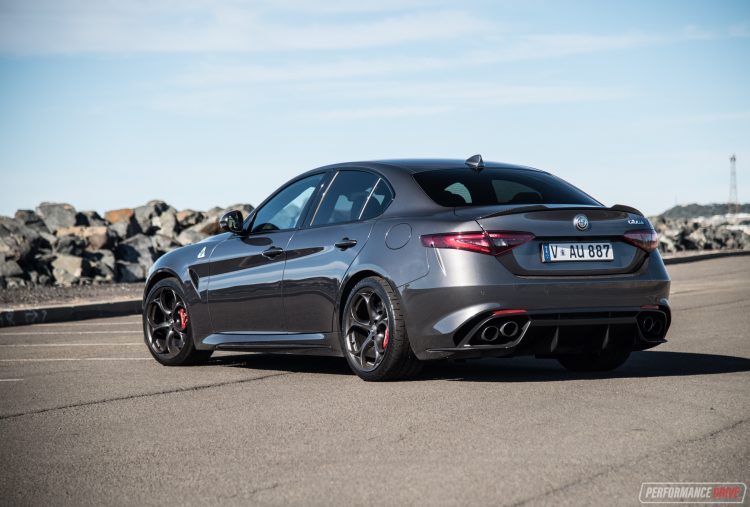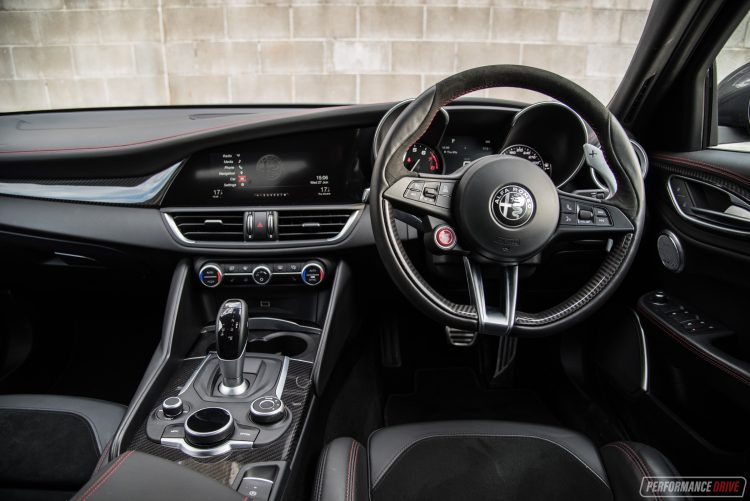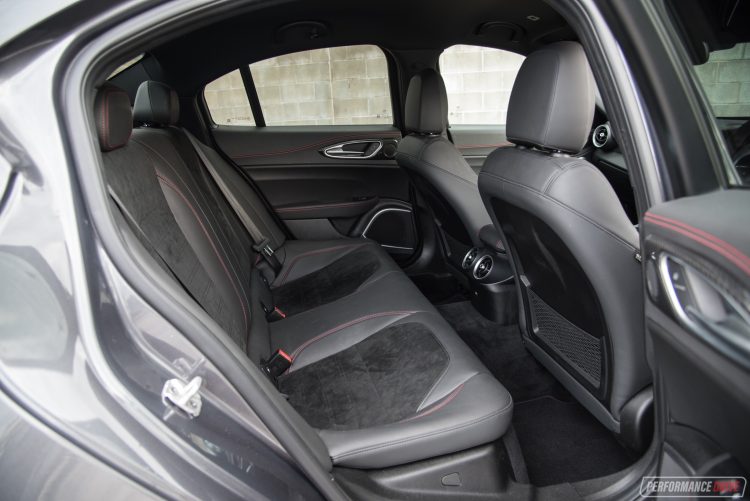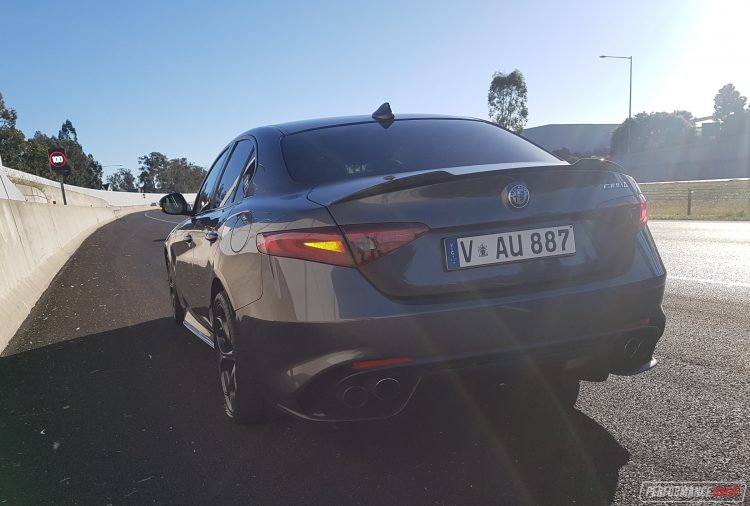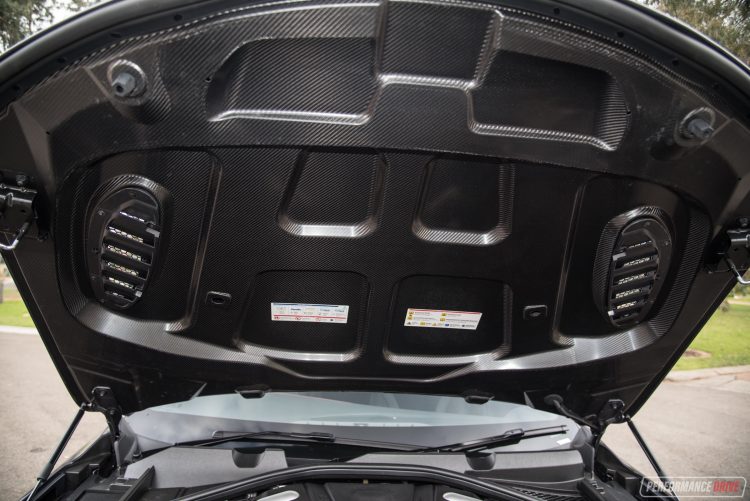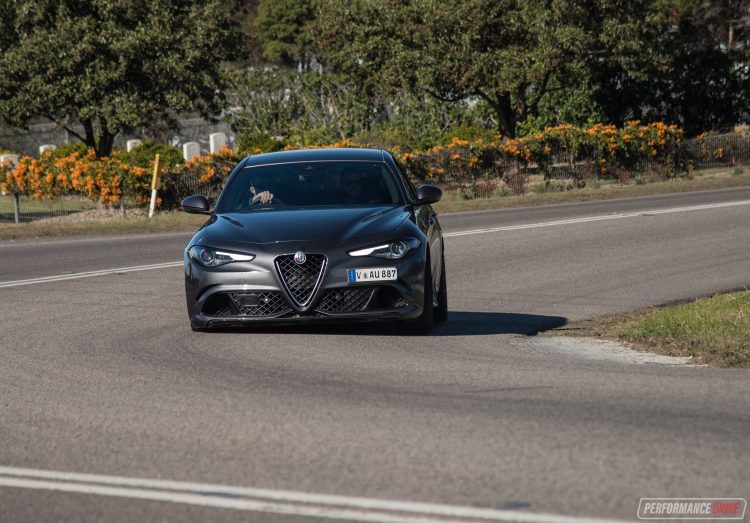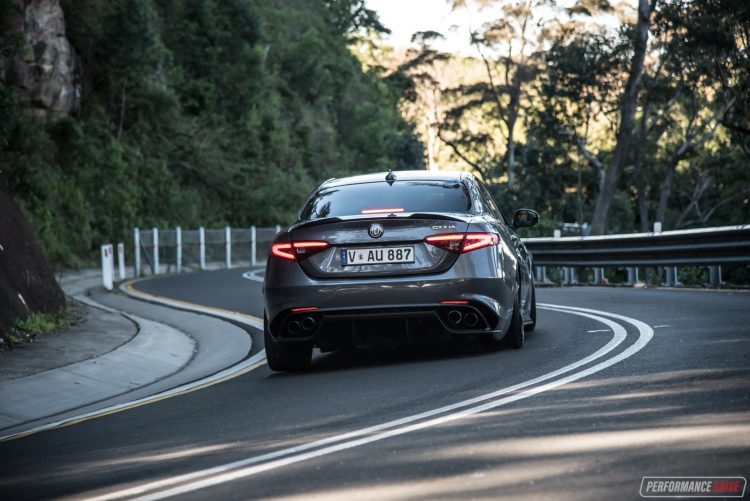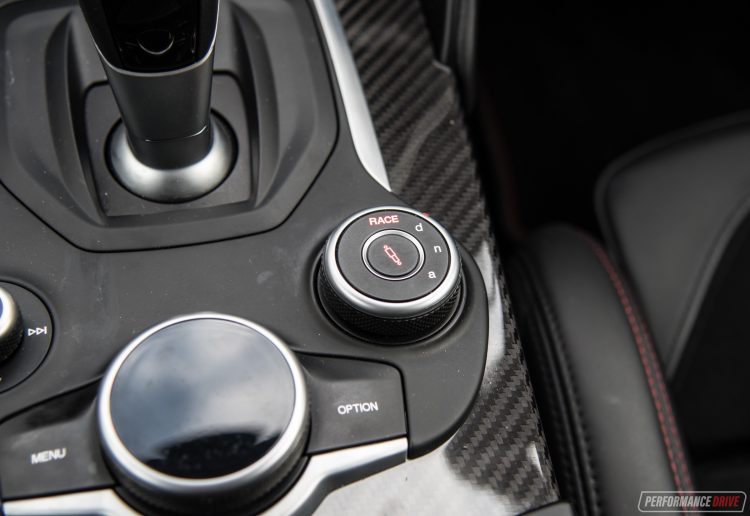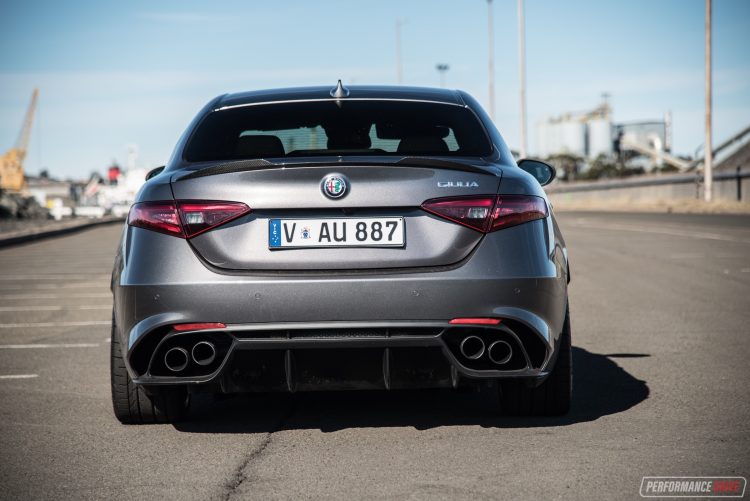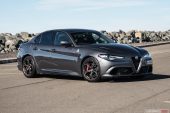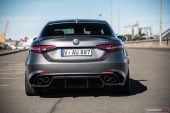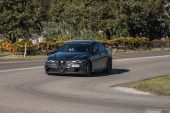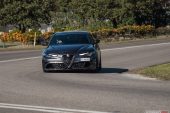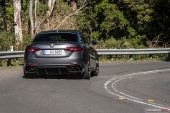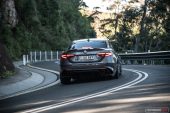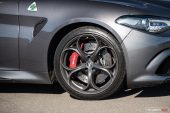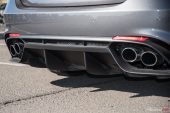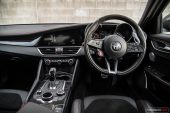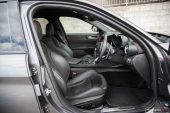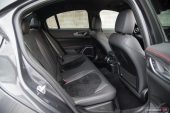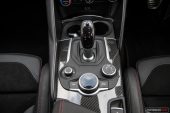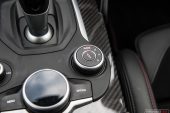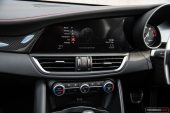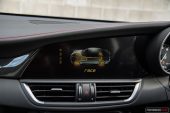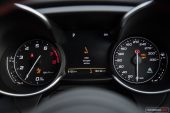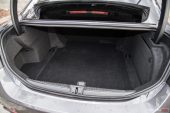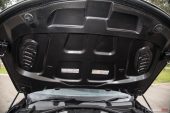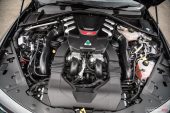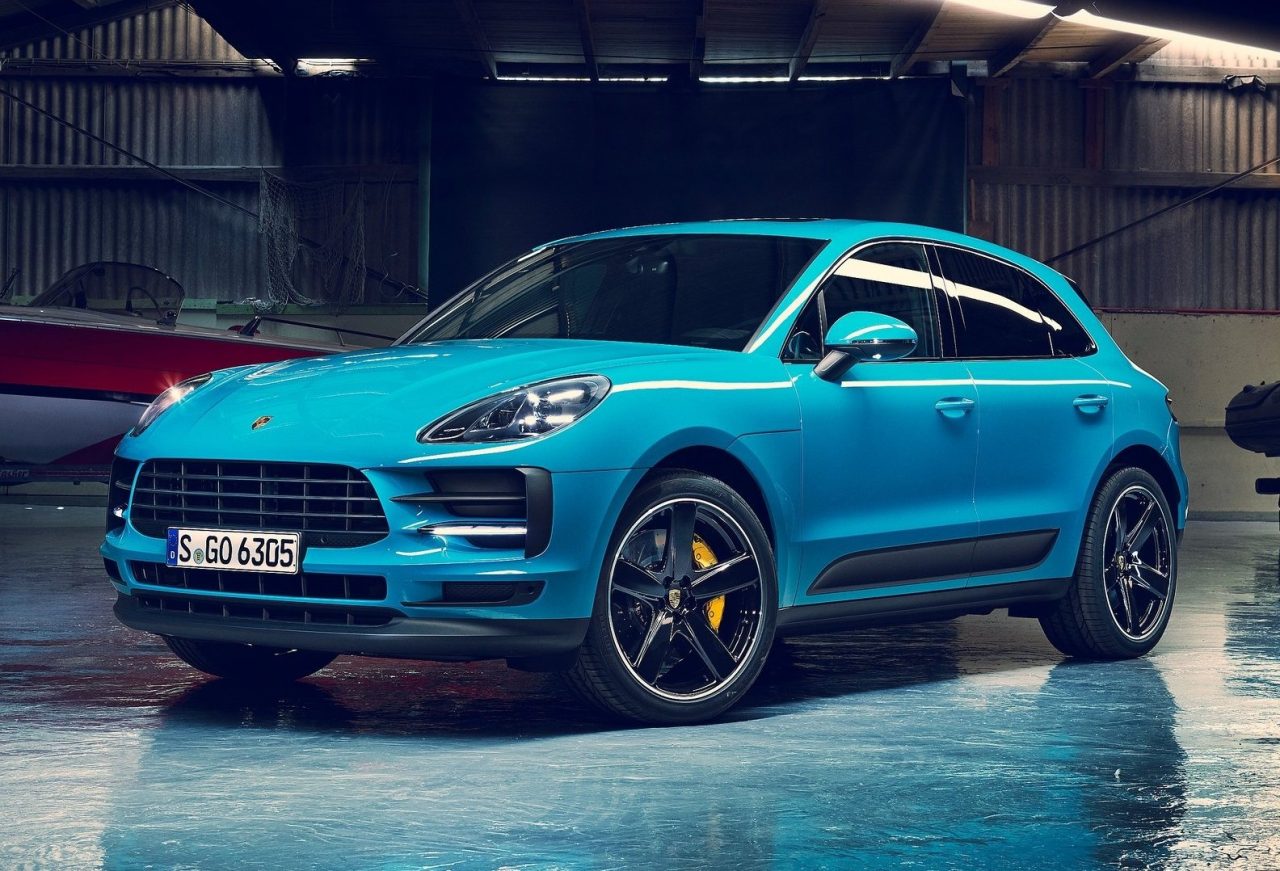You’ve probably heard it all before. Alfa Romeo is finally back to making rear-wheel drive sports cars. What’s more interesting to us though is the fact the Alfa Romeo Giulia Quadrifoglio Verde is powered by a Ferrari-designed engine, and the fact that it holds the production sedan lap record around the Nurburgring. These are some very serious credentials
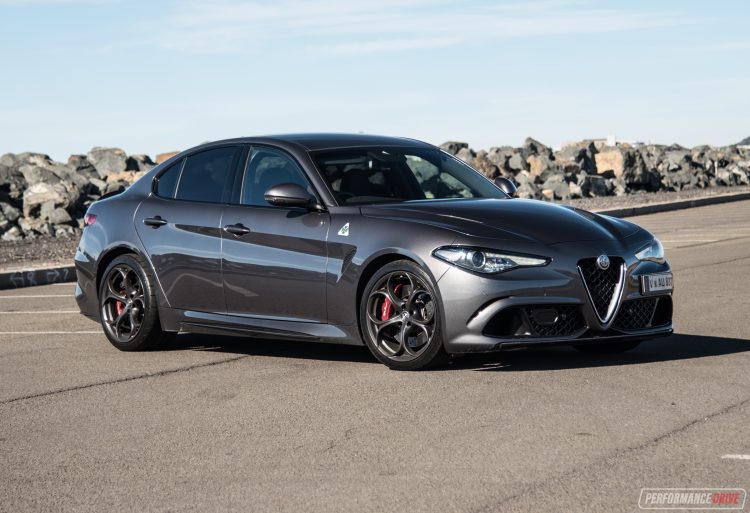
Alfa Romeo hasn’t made a rear-wheel drive driver’s car for decades. Since the early 1990s, actually, with the 75 – an early ancestor of the new Giulia. Since then, the Italian Fiat-owned brand has been predominantly building relatively uninteresting yet nicely-designed front-wheel drive cars. Fortunately, Alfa Romeo does have a long and celebrated history making some of the finest rear-drive sports cars of all time. It even competed in the most elite forms of motorsport during the 1920s and through to the 1970s, in Formula 1 and in the illustrious Mille Miglia and Targa Florio. In other words, it has plenty of experience in this area.
There is a just one variant of the new Giulia Quadrifoglio Verde (meaning green four-leaf clover, aka QV), and the prices in Australia start from $143,900. This puts it in front of the BMW M3‘s base price of $130k, but under the Mercedes-AMG C 63 S sedan’s starting price of $157k (all excluding on-roads).
There are a few options but not too many, and most seem justified as being options. You can get carbon ceramic brakes for an additional $13,000, for example, and Sparco carbon seats for $7150. Although steep, these items aren’t for everyone and are not a necessity, unlike some options in German and British cars that really should be included as standard.
2018 Alfa Romeo Giulia Quadrifoglio – THE SPECS
[column width=”47%” padding=”6%”]Engine: 2.9-litre turbo four-cylinder
Output: 375kW@6500rpm / 600Nm@2500-5000rpm
Transmission: Eight-speed auto
Drive type: Rear-wheel drive, torque-vectoring
Wheels: F: 19×8.5, 245/35 R: 19×10, 285/30
ANCAP: Five stars (regular Giulia)
Tare weight: 1585kg
Power-to-weight: 4.22:1 (kg:kW)
Official fuel economy: 8.2L/100km
Economy during test: 13L/100km
Fuel capacity/Type: 58L/95 RON[/column] [column width=”47%” padding=”0″]Power efficiency: 45.73kW:L/100km
0-60km/h: 2.35 seconds*
0-100km/h: 4.28 seconds*
60-110km/h: 2.56 seconds*
1/8 mile: 8.13 seconds at 155.4km/h*
1/4 mile: 12.25 seconds at 194.5km/h*
Max acceleration: 0.906g
100-0km/h braking: 2.65 seconds at 33.63 metres*
Max deceleration: -1.442g
Decibel at idle (Race mode off/on): 55/61*
Peak decibel at 60-100km/h (Race mode): 88*
Priced from: $143,900[/column][end_columns]
* Figures as tested by PerformanceDrive on the day. Factory claims may be different
2018 Alfa Romeo Giulia Quadrifoglio – THE PACKAGE
Alfa has definitely done a fine job on the design. There’s no question about that. And inside, it looks lovely too. Lots of elegant shapes and blended sections that all flow together like a painter drawing the waves of an ocean. However, there are some flaws in terms of actually using the interior. For starters, the 8.8-inch multimedia LCD screen on the dash. It looks large, but the clever artists at Alfa have merged the blackness of the screen to overlap onto the dash, making the screen appear larger than it is. When using the standard sat-nav, you might find the map strangely small.
We’re not a huge fan of the menu layout, either. It’s just a list. There are no fancy tile apps or special coloured areas to separate the menus. Also, some of the materials and switchgear inside don’t have that Germanic precision fit and finish, or British prestige feel, or Japanese build quality for that matter. Cheap plastics are used for some of the important areas, while other areas get exotic carbon fibre. Although, it must be said the rotary controller for the screen down on the centre console is ideally positioned and feels refined.
Getting in is more sports car than business sedan. You can take that as a good thing or bad thing. You need to bend down to slot in, and once you’re in, the driving position can only be described as perfect. The steering wheel falls naturally to your hands, and if it doesn’t, you can pretty easily adjust it to do so. There are plenty of power adjustments for the leather and Alcantara-wrapped front seats, and they provide good lateral support and soft cushioning for long drives.
Rear seat space is slightly below average in the segment in our opinion, but still ahead of some, such as the Lexus IS. The big driveshaft tunnel is the main culprit, restricting legroom for the middle-seat passenger. There are a couple of aviation-inspired adjustable climate vents for the rear though, helping to boost comfort.
To reel off some of the standard features, the Giulia QV comes with adaptive cruise control which likes to explore around the speed you set rather than stick to it, as well as forward and reverse collision mitigation, dual-zone climate control, Bluetooth (no Apple CarPlay or Android Auto), digital radio, and 19-inch alloy wheels wearing Pirelli P Zero Corsa tyres with no spare wheel (puncture repair kit, instead). During our test we suffered a flat on a busy Sydney motorway and had to wait for roadside assistance to sort us out, putting a three-hour dent in our morning.
Onto the more exciting stuff; the powertrain. It incorporates a 2.9-litre twin-turbo V6 designed by sister company Ferrari. It’s an all-aluminium unit using a 90-degree V configuration, with a cylinder capacity of just under 500cc. These measurements make it remarkably similar to the Ferrari F154-series 3.9-litre twin-turbo V8 used in cars such as the Ferrari California T and 488 models. With single-scroll IHI turbochargers providing up to 35psi of boost, and a 9.3:1 compression ratio, the unit develops an astonishing 375kW at 6500rpm, and 600Nm between 2500-5000rpm. This is one of the most powerful engines, per litre, currently on the market.
From the engine power is sent into a ZF-based eight-speed sports automatic transmission, with a carbon fibre driveshaft feeding twist into a sophisticated rear differential. The diff is equipped with twin clutches and offers computer-controlled torque vectoring – it’s so advanced, it can send up to 100 per cent of the power to either the left or right wheel if the conditions call for it.
Alfa Romeo has applied carbon fibre in many areas to help maintain weight. Most of the aero kit is made from the stuff, including the low front spoiler, side skirts and neat lip spoiler on the boot. The vented bonnet and roof is also made from carbon. All combined, the Giulia Quadrifoglio has a tare mass of 1585kg. Compared with its main rivals, the BMW M3 Pure (auto) weighs 1522kg (tare), and the Mercedes C 63 S sedan weighs a hefty 1783k (tare) – keep in mind the Merc uses a V8.
2018 Alfa Romeo Giulia Quadrifoglio – THE DRIVE
So, what is this beautiful beast like to drive? This is an area where Alfa Romeo usually really excels. It should provoke a wave of sensual emotions when behind the wheel. It should feel special and sound special, while offering very engaging driving dynamics.
You don’t even need to gun the throttle in the Giulia QV to experience some of this passionate heritage. Around town the Giulia’s steering response is immediate. It’s almost too sharp and can have a tendency to turn in quicker than you might expect. Fortunately, the Giulia’s chassis flawlessly accepts and manages anything you do with the steering wheel. You’ll be surprised by how quickly you can flick it around a roundabout or one of those inner-city chicanes, all without breaking the speed limit. It’s just so nimble and feels extremely light on its feet.
Turning up the pace on a mountain road, this car is sensational. It twists and flows down a set of bends like no other car in this class. It’s hard to explain. It feels alive. It feels active and athletic. A large piece of machinery usually just does what you tell it to do. But in this the car feels like it’s right there with you, anticipating and even taking steps before you command them. It’ll reach and exit corners very quickly and you need to be on the ready to make the next move.
That clever torque-vectoring differential is a brilliant thing. Unlike its main rival, the M3, the Giulia QV won’t snap into oversteer at a mere sneeze of throttle application. In this you can lean hard on the gas, even mid-corner, and it just bites and slings around with utter confidence and grip. On the contrary, swift little powerslides and drifts can be tricky to provoke if that’s your thing. And in some conditions, we did experience moments of single-wheel spinning. However, this minor tendency could help to reduce nervousness, especially with a car that has this much power.
Alfa has done a fantastic job with the suspension. In fact, the rivals do need to learn from this. Whether it’s over corrugations on rural roads or smashing over mid-corner bumps at a fast tempo, the suspension catches and then manages the after-effects without upsetting the driving direction or the passenger’s spine. It is no surprise at all this car has set the lap record around the Nurburgring. The way it handles the road and balances itself at all times is uncanny.
Alfa Romeo offers its ‘DNA’ drive mode toggle on the Giulia QV, like in other modern Alfas. You can go through Advanced efficiency, Natural, or Dynamic. Or, if you’re a bit mad, you can flick it into Race. Doing this turns the traction and stability control off, and opens up the exhaust for a louder, crisper sound. Race mode also sharpers throttle, steering and differential response, and generally makes the car come alive.
During heated driving the exhaust barks and grumbles like a wild animal, and purrs like a prowling tiger when cruising. It’d be great if there was a separate button to operate the exhaust – or simply leave it open all the time – as it doesn’t sound all that appealing in normal mode. Nonetheless, in Race mode is where you’ll experience the full potential of the car. There’s also a damper button that gives you the opportunity to have every other setting in Race, while isolating the suspension to the softest tune (called MID).
Speaking of the engine note, we’re not sure about the sound of these modern six-cylinder turbo engines, particularly V6 configurations. The Giulia QV has a busy, rumbly buzz that gets louder and a bit angrier as the revs build. But it doesn’t really sing like a classic Alfa. You can clearly hear it in Race mode, and it definitely sounds fierce and far from your average sports sedan. But it would be nice to hear some of that Ferrari and Alfa pedigree.
Throttle response isn’t as sharp as the M3, even in Race mode. It is hilariously powerful, with loads of top-end power, don’t worry about that. We’re talking about the touch response of the accelerator pedal. This isn’t necessarily a bad thing when you’ve got this much power on hand, but it can make it difficult to make really fine adjustments when settling (or purposely unsettling) the car, depending on your mood.
Going flatout up through the gears will blow your mind. It’s extremely quick. During our tests we clocked 0-100km/h in just 4.28 seconds and the quarter mile in 12.25 seconds. We weren’t able to get close to Alfa’s 0-100km/h claim of 3.9 seconds. Alfa Romeo hasn’t fit launch control, and we think it could easily achieve 3.9 or lower with such a system, but even without it 4.28 is seriously quick.
Lastly, is the Giulia QV fuel efficient? It fluctuates a lot. If you’re spending more time on the gas pedal and in Race mode, sure, it drinks like a V8. In these conditions we averaged around 15L/100km. If, some how, you manage to tone it down and use the throttle more gingerly, you can expect to see around 12L/100km. The official average is 8.2L/100km, which results in one of the highest efficiency-to-power ratios we’ve ever seen. Dividing the power by 8.2 spits out a ratio of 45.73kW:L/100km. In other words, in the lab, this engine produces enormous power for the fuel it uses.
2018 Alfa Romeo Giulia Quadrifoglio – THE VIDEO
2018 Alfa Romeo Giulia Quadrifoglio – THE VERDICT
This car is a blast to drive. It is stupendously fast and capable up or down or around a mountain, and most drivers will be able to explore the upper reaches of the car’s ability thanks to the clever torque-vectoring power delivery. It also looks as sexy as an Italian designer, and nothing in this vehicle class will be quicker around a track.
Is it better than the benchmark BMW M3? If you want to drive sideways and do it for years without repairing much more than the tyres, the M3 would be the superior option in our opinion. The Beemer feels more strongly built, the interior is a fraction more practical, and we reckon it’s more entertaining to drive (albeit a little bit scary in some conditions).
On the other hand if you simply want the quickest, best-looking, and most likeable to the general public, in this segment, you needn’t look at anything else. This Italian stallion is your machine. It is such a cool car, and we love this discreet colour combination featured here. If this is the first of many exciting cars to come from Alfa Romeo, we’re eagerly awaiting the future.
[column width=”47%” padding=”6%”]PROS:
– Insane point-to-point grip and performance; holds Nurburgring lap record
– Gorgeous design, inside and out
– Sharp and super-responsive steering
– Advanced torque-vectoring for foolproof power delivery
– Ride quality in comfort mode (accessible even in Race powertrain mode)
– Overall a very cool car; everybody likes it
[/column] [column width=”47%” padding=”0″]CONS:
– Serious drivers might prefer mechanical limited-slip differential
– Some cheap-feeling/-looking interior bits
– Steering almost too sharp for regular conditions[/column][end_columns]
As always, if you’re thinking about buying a new car don’t forget to click here to speak with our car buying specialists.
